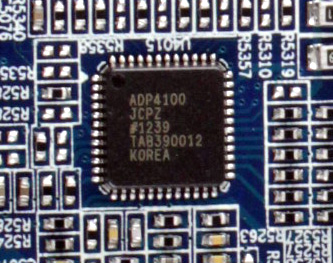Index
The WindForce dual-slot uses three 7.5cm fans and they cool a heatsink which stretches across the entire length of the card, but it’s actually a three-piece design.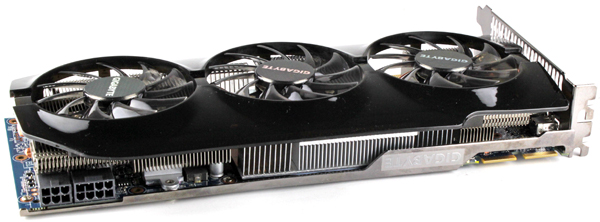
The fans are placed inside the large plastic shroud that can be partly removed after undoing a few screws, which means there’s no need to remove the whole cooler once it’s time to do a bit of spring cleaning.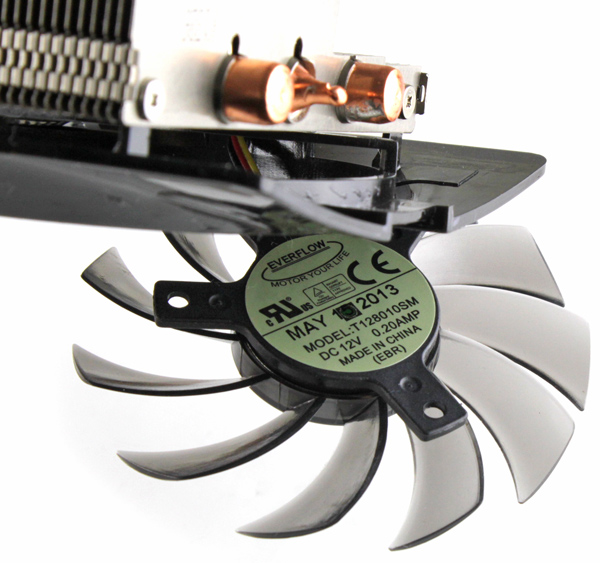
All three fans share the same 3-pin power connector. Setting the RPM manually is a breeze using AMD’s Overdrive or other utilities like Gigabyte OC Guru II, MSI Afterburner or PrecisionX.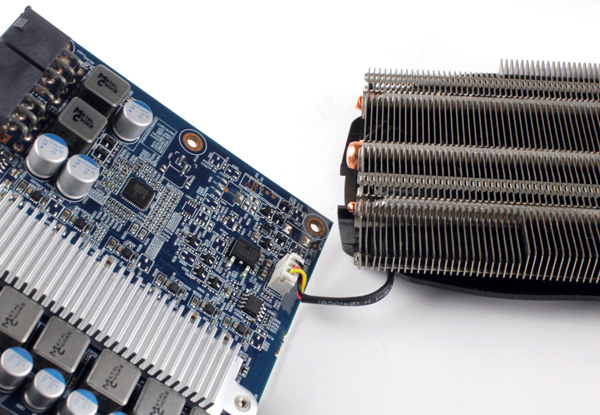
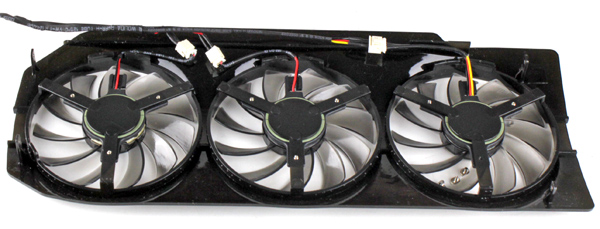
Gigabyte also applied Triangle Cool technology, which is supposed to minimize turbulence between fans and provide the system with more efficient air flow. This is how it’s all supposed to work.
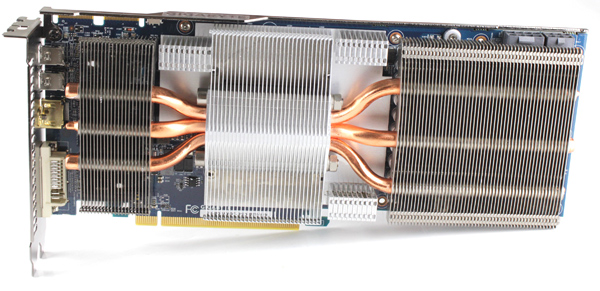

Three 8mm heatpipes pass through the entire heatsink and they are flattened right over the GPU, where they need to suck up as much heat as possible.
Memory chips are cooled as well, but the thermal pads that cover the memory are located at the aluminium base of the heatsink.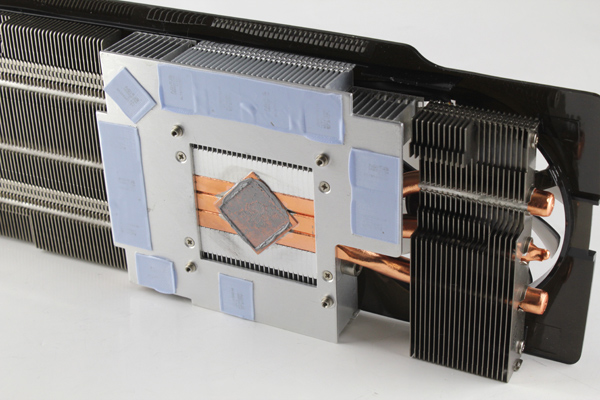
Gigabyte is using Elpida memory chips, model number W2032BBBG-6A-F. They are specified to run at 1500 MHz (6000 MHz GDDR5 effective). There’s a total of 12 GDDR5 for a total of 3GB and they are all installed on the top side of the PCB.
The small heatsink used to cool the voltage regulation circuit is not part of the WindForce cooler. It’s held in place by a vertical brace located at the back of the PCB.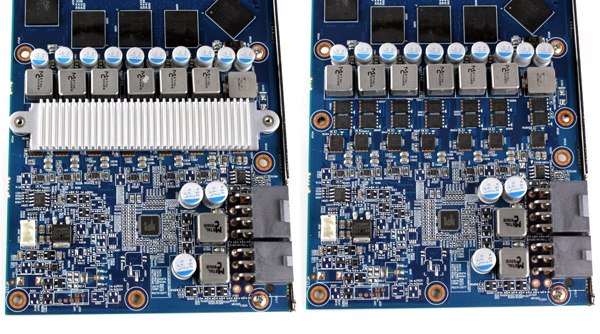
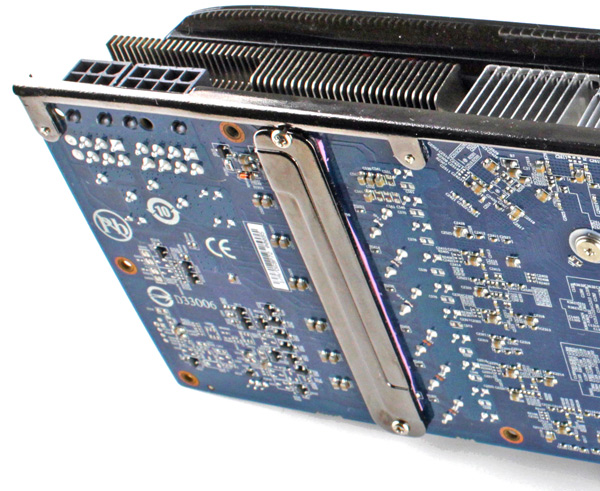
Voltage regulation is handled by an ADP4100 voltage controller. This solution does not provide voltage control or advanced monitoring via I2C. For example, GPUZ detected fewer parameters than it did with a similar XFX card that uses a Chill voltage controller.